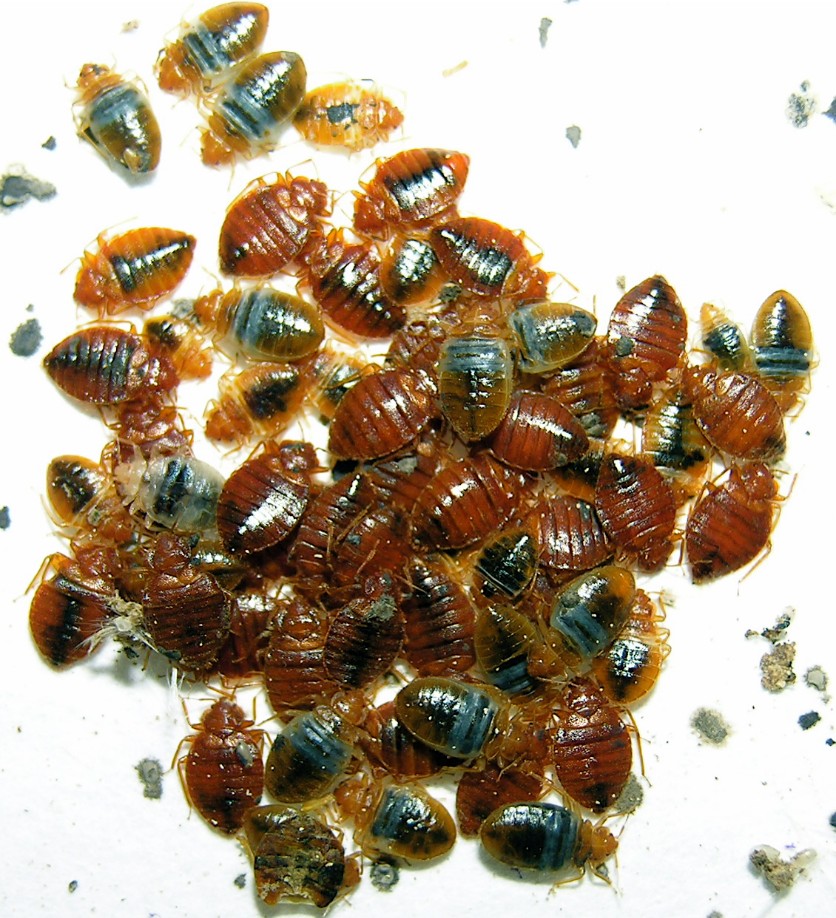Bed Bugs

The common bed bug is an ectoparisite insect (a parasite which lives on the outside of the body of the host) of the family Cimicidae. Bed bugs feed only on the blood of humans and other warm-blooded hosts. Although they have a cryptic behavior and can conceal themselves in tight cracks and crevices, bed bugs are often found in bed parts, such as mattresses and box springs, hence the common name.
Bed bugs like to travel and are good hitchhikers. They will hide in suitcases, boxes and shoes to be near a food supply. They are elusive, nocturnal creatures. They can hide behind baseboards and in cracks, crevices, and folded areas of beds, bedding and adjacent furniture, especially mattresses and box springs. Bed bugs can also hide in electrical switchplates, picture frames, wallpaper and nearly anywhere inside a home, car, bus, or other shelter. Bed bugs usually come out at night for a blood meal. However, they are opportunistic insects and can take a blood meal during the day, especially in heavily-infested areas. Bed bugs usually require 5-10 minutes to engorge with blood. After feeding, they move to secluded places and hide for 5-10 days. During this time, they do not feed but instead digest their meal, mate, and lay eggs.
Prevention and Control
- Vacuum suitcases after returning from a vacation.
- Check your bedsheets for tell-tale blood spots.
- Consider bringing a large plastic trash bag to keep your suitcase in during hotel stays.
- Carry a small flashlight to assist you with quick visual inspections.
- Never
bring second-hand furniture, especially mattresses and box springs,
into a home without thoroughly examining for signs of a bed bug
infestation.
- Regularly inspect areas where pets sleep for signs of bed bugs.
- Bed bugs are elusive creatures, Contact Drum Pest Control to address an infestation.
Drum Pest Control Specializes in the following services.